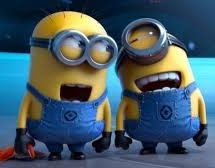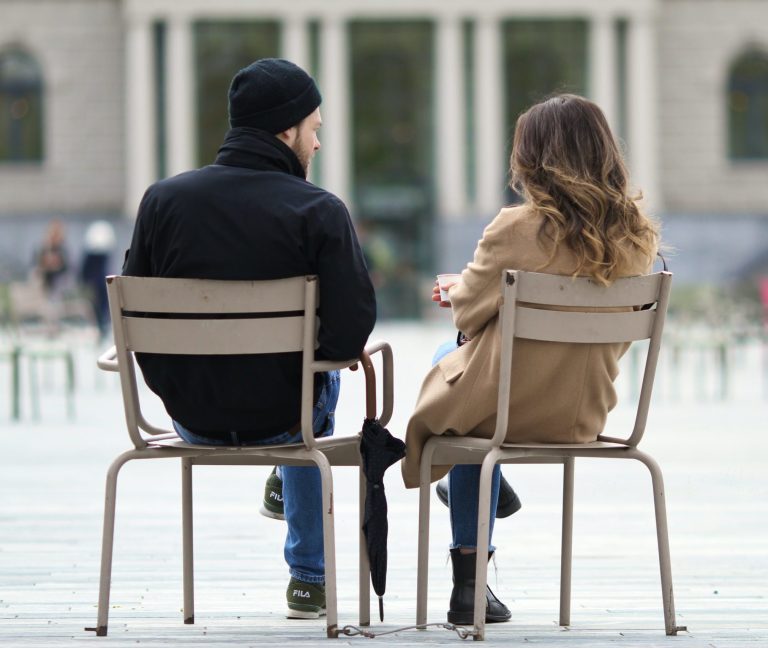How to Show Meaningful Character Action in Dialogue Scenes
This is such an important aspect to writing dialogue, I want to share this post with you that I wrote many years ago. Too many writers fail to show what their characters are doing while conversing, and coming up with a great THAD is the key to success!
Back when I wrote the book (with four other authors) 5 Editors Tackle the 12 Fatal Flaws of Fiction Writing, I spent a month going over one of the fatal flaws in fiction writing: Flawed Dialogue Construction. I touched on the subject of “talking heads,” which is a problem in a lot of manuscripts. What this means is scenes with dialogue are not well grounded in setting and do not show clearly the actions the characters are engaged in while talking.
But even if writers drop in some lines here and there to show where their characters are when engaged in conversation and some body language or background activity, often these characters are still basically “talking heads.”
A lot of writers fail to take the time to bring a richer environment to the scene because they are so focused on writing the dialogue and making sure the information being revealed is done well. But so much more is needed to make a heavy-dialogue scene effective.
Writers might get their dialogue mechanics down pat, appropriately using speech and narrative tags effectively, and avoiding that “on the nose” dialogue that just doesn’t come across as believable. But all the great dialogue in the world will still be problematic if it’s floating in space, coming out of talking heads that don’t seem to have bodies attached to them.
Talking Heads Avoidance Devices
And there’s not just a problem with missing bodies. Entire settings are missing. Yet, even if writers purposefully construct both bodies and setting, dialogue might still face a fatality. So let’s explore this talking heads syndrome a bit and look at ways to avoid succumbing to what might constitute the slow (or fast) death of a potentially great scene.
I became acutely aware of this syndrome upon reading Elizabeth George’s terrific book Write Away. She created what she calls a THAD: Talking Heads Avoidance Device, something that helps her, when writing dialogue-heavy scenes, to avoid having heads floating unattached in space. She defined this as “an activity going on in a scene that would otherwise consist of dialogue.” In other words, she considers what she might have her characters doing while they are talking.
Surprising to me, many authors don’t seem to take the time to consider giving their characters an activity while speaking. Oh, sure, they might have two characters sitting and drinking coffee, so on occasion the writer might throw in bits like “she lifted the cup to her mouth,” “she sipped her coffee,” “she set her cup down and frowned.” Yes, those little actions, at times, are useful. A writer might also have one of the characters stand, pace, go to the sink, put her hands on her hips. But is that really what’s needed to bring richness to a dialogue-heavy scene?
Here’s what George says a THAD can do for a scene:
- Keep a scene from showing talking heads
- Reveal meaningful insights about characters via showing something interesting they are doing
- Reveal something key about the plot
- Bring depth by having the THAD be a metaphor or something symbolic in the story
Does writing “she sipped her coffee” really add anything to a scene? Maybe, but I’d like to challenge you to spend some time creating effective THADs instead of opting for the obvious. By considering the point of your scene (what key information you need to reveal to move the plot forward) and pondering the high moment of your scene (the climax or reveal at the end of it), you might come up with better activities for your characters to engage in while talking.
Consider Your Bigger Picture
Of course, before even writing your scene, it will help to first consider the bigger picture—where you might set your characters for greatest impact, and this is a whole other topic (that I’ve spent many chapters on in many of my writing craft books). But let’s say you’ve chosen a great setting for this scene, one that is significant to your POV character and serves a strong purpose in your story.
Now, you have your characters in place, ready to talk, and (I hope) you have planned some intense inner and/or outer conflict to take place, along with important plot reveals that add tension and move your story forward.
So what kinds of THADs can you come up with? Make a list of things your characters could be doing as they talk. Can they be walking somewhere? Can one be busy working on some project that tells a bit about her passion, personality, abilities? Can you bring in humor by having something bizarre or hilarious going on? Your choice is greatly determined by the purpose of the scene. If your characters are at a funeral, unless you are writing a dark comedy, they aren’t going to be trying to dig out all the dirt as it’s being tossed into the grave over the casket. Then again, if you’re writing a serious relational drama and your character is completely losing it, that activity while conversing could be intensely poignant and even heartbreaking.
So think through, first, what your genre, tone, and scene purpose might dictate as to the THAD you choose to use.
Symbolic Devices for Powerful Impact
I love to come up with symbolic THADs for my books. If you’ve developed powerful motifs that run through your story—an image or item, a phrase or word, or a concept—you can create appropriate THADs that use your motif and contribute to the “image system” for your novel. Here’s what George writes:
[In] Deception on His Mind: The THAD in a scene between Barbara Havers and her father-daughter Pakistani friends Taymullah Azhar and Hadiyyah deals with Hadiyyah presenting to Barbara a bee that she’s captured and put in a jar. It becomes a metaphor for people being removed from their communities and consequently a metaphor for the Pakistani experience in Great Britain.
In some of her novels, the device she uses reveals clues in the murder investigation. In Playing for the Ashes (my favorite of all her novels), her character is an animal rights activist, so George has her characters engaging in conversations as they are rescuing animals. Showing your POV character in her “element” in order to show what she cares about or what she loathes can be so much more useful to your story than having her sip coffee.
Here’s a Before and After example from my novel Conundrum. This is the second scene in the novel, and the first showing my protagonist, Lisa, at home in “her ordinary life.” The first scene ends with her arriving at her house after visiting her brother in the mental hospital, only to find her husband, Jeremy, packing up his truck with his belongings—moving out on the sly in order to avoid a confrontation with Lisa. There’s a bit of dialogue at first, but just as they’re about to go inside to continue their discussion, they hear a cry from the barn. One of Lisa’s rescued goats is in labor.
The Before example is how I might have written this scene without an effective THAD.
Before:
I stood in front of the house, staring at the truck full of Jeremy’s belongings. I was speechless.
Jeremy said, “Let’s go inside and talk. I’ll make you some coffee.” I nodded weakly and followed him into the house. I dropped down into a chair at the table while Jeremy put water in the coffeepot and got the coffee out of the freezer. He ground the beans and put five scoops into the pot, then turned it on.
“I got the document from the lawyer. The devise.” Jeremy’s tone was hard. Like he’d practiced saying that in the mirror.
When I didn’t respond, he added, not masking his anger, “I’m going to insist she sign it. If she won’t put the property in our name now, she’s going to have to make good her promise that this house, this property, will be left for us in her will.”
The coffeepot stopped gurgling. He poured me a cup and brought it to me, then leaned back against the counter, his arms crossed.
“Look, she already has it for us in her trust. You know this!”
“And she can remove it anytime she damn well pleases. This way she has to put her money where her mouth is. Sign something to prove she means it.”
“Jer, she’s my mother, for God’s sake! Family means everything to her. Please, let’s not do this. Not now.” I sipped my coffee and then exhaled hard, wanting to be done with this argument already—the argument that had gone on for hours the night before.
“Fine!” I added. “Give her the paper and let her sign it. Then you’ll see. All this fuss over nothing. You know it has something to do with her taxes—”
“A flimsy excuse. She owns your older brother too. Her name’s on his deed. And Neal—she made him sell his house so she could have more ready cash. Dammit, Lisa, why can’t you see this?”
I pinched my lips together in frustration. “She’s my mother. Don’t I know her better than you? You’re just talking out of your paranoia.” I gulped down more of my coffee, letting it burn my throat.
I thought about the adoption papers Jeremy had set on the cabinet yesterday. I choked up over all the years of frustration, heartache, and disappointment I had experienced. I kept my face turned, not wanting Jeremy to see my tears.
“Do you need me to stay here?” Jeremy asked.
“No. Just go.” I just wanted to get in the bathtub and soak, lock the door, wallow in my misery.
One child. That’s all I wanted. Was that too much to ask for?
After:
“First one’s coming out,” I said.
Jeremy hurried back and set down the basin and towels. He leaned close enough to see but didn’t get in my way. I fished around with my finger until I felt the tip of a hoof in the canal. “Found a leg,” I said.
We both grew quiet as I concentrated. Sassy’s heavy panting sounded like a small tractor revving. Every once in a while she let out a little bleat of discomfort, but I talked softly and kept her calm. I managed to cup my hand over the small emerging head and loop a finger around the hoof. I tugged firmly and felt the small body move an inch. Then it hitched up. I muttered under my breath.
“What?” Jeremy asked. “Can I help?” I repositioned both my arm and the goat, which caused Sassy to wail again.
“Help me get her to standing.”
My leg was cramping under me, and my stomach knotted up. The rancid smell of the barn and the amniotic fluids from the goat made bile rise to my throat. I fought another urge to throw up. Maybe the combination of stress, lack of sleep, Raff’s urge to die, and the sting of my failing marriage was stewing inside me, merging into one sickening putrefying mass in my gut. I took deep breaths, caught Jeremy studying me in puzzlement. I avoided his eyes.
I hefted Sassy to all fours and tried with my left hand for better positioning in the birth canal. That proved to be a better stance. I withdrew my hand from the slippery space and yanked off my wedding ring. I handed the simple gold band covered in slime to Jeremy, who looked at it and flinched. The significance hit me, although I didn’t have time to ponder it.
“I’ll lose it in there. Please, just keep it for me—for a few minutes.”
My words seemed to shake Jeremy out of his reverie. I never took off my wedding ring—ever.
“I got the document from the lawyer. The devise.” Jeremy’s tone was hard. Like he’d practiced saying that in the mirror.
When I didn’t respond, he added, not masking his anger, “I’m going to insist she sign it. If she won’t put the property in our name now, she’s going to have to make good her promise that this house, this property, will be left for us in her will.”
I spun to face him. “Look, she already has it for us in her trust. You know this!”
“And she can remove it anytime she damn well pleases. This way she has to put her money where her mouth is. Sign something to prove she means it.”
“Jer, she’s my mother, for God’s sake! Family means everything to her. Please, let’s not do this. Not now.” I gestured at the distressed goat that stood panting hard and shaking from head to hoof. I exhaled hard, wanting to be done with this argument already—the argument that had gone on for hours the night before.
“Fine!” I added. “Give her the paper and let her sign it. Then you’ll see. All this fuss over nothing. You know it has something to do with her taxes—”
“A flimsy excuse. She owns your older brother too. Her name’s on his deed. And Neal—she made him sell his house so she could have more ready cash. Dammit, Lisa, why can’t you see this?”
I pinched my lips together in frustration. “She’s my mother. Don’t I know her better than you? You’re just talking out of your paranoia.” I turned my back on Jeremy and concentrated on Sassy. I closed my ears to everything but her labored breathing.
Time moved slowly, and I hated seeing Sassy in such distress. Her groans and grunts tore at my heart, so I worked as quickly as I could, getting my hand around the head again.
“Why won’t she push it out?” Jeremy asked.
‘Because . . .” I grunted, “that leg goes to a different kid.” I closed my eyes and with my mind followed my hand along as I traced the front hoof up to the stifle in that confining space, feeling the first bend forward, the second, backward at the hock. Hind leg, not front. I pushed that leg back into the uterus as far as I could and fished around for a front leg. I only needed one front leg that corresponded with the appropriate head and I would be in the clear.
Finally, I found one that connected to the neck of the goat sticking partway out of the birth canal.
“Got it!”
Sassy screamed as I pulled gently, foot and head, then waited until she got back to pushing. Along with her efforts, I cleared the shoulder over the cervix, the head and legs sliding out with the rest of the small wet body following. Jeremy handed me a towel, and I placed the small doe baby on it, under Sassy’s nose, so she could sniff and lick it. I heard Jeremy chuckle, and a warm feeling rose to my heart, followed by a pang of despair that I hid in my attending to the next new arrival plopping out onto straw.
How simple it seemed to give birth to new life, and how very impossible. Something right here in my grasp was completely out of my grasp, denied me.
I choked up over all the years of frustration, heartache, and disappointment and dried off the next kid, a little gray buck with a white blaze on his forehead. Both kids were already standing on wobbly legs and baaing in cute warbly voices. Sassy spoke back to her babies between frantic licks. I always found it humorous watching does attend to their newborns. A third kid came with one more Sassy squawk—another buck, this one a runt. He fit in the palm of my hand. While Jeremy petted the other two, I rubbed that tiny guy with a towel, but got little response. Once I iodined the umbilical areas and made sure Sassy was done, had food and water, and passed her placenta, I stood. My legs shook from squatting so long, and my head spun hard until I got my balance.
I picked up the runt, still wrapped in a towel. “This one needs warming.” I unlatched the gate, where Buster and Angel stood, alert, sniffing at my little bundle.
“Do you need me to stay here and keep on eye on these guys?” Jeremy asked.
“Only if you want to. But, they’re doing fine.” Better than I was. I just wanted to get in the bathtub and soak, lock the door, wallow in my misery. Instead of lifting my spirits, these three new lives only sank me deeper. I gritted my teeth so hard my jaw began to ache.
One child. That’s all I wanted. Was that too much to ask for?
By using this THAD, I reveal a tremendous amount of important information. We see the dynamics of Lisa and Jeremy’s unraveling relationship, and the dialogue makes clear what the issues are with her mother and their house. The Before passage does reveal some of this, but by having Lisa in this activity, it works as a painful trigger for her about her infertility, which is also contributing toward her marriage breakdown. We see her love for animals, we see her passion and compassion, and we see something she’s skilled at, all which helps foment empathy for her.
I worked the scene from all these angles to accomplish the key tasks: establishing that empathy for Lisa, creating tension between the two characters as well as showing the value of their relationship and the love they have. And creating an interesting activity for the characters to be engaged in that I hoped would make readers keep reading. A whole lot more interesting (and unusual) than sitting and drinking coffee, right? And in case you are wondering, yes, I’ve delivered a lot of baby goats!
So I hope this helps you see the need to go further with your dialogue scenes. By creating effective, powerful THADs, you can avoid the pitfall of flawed dialogue construction.
Your thoughts? Have you thought up a great THAD for one of your scenes that you’d like to share?
Featured Photo by charlesdeluvio on Unsplash











